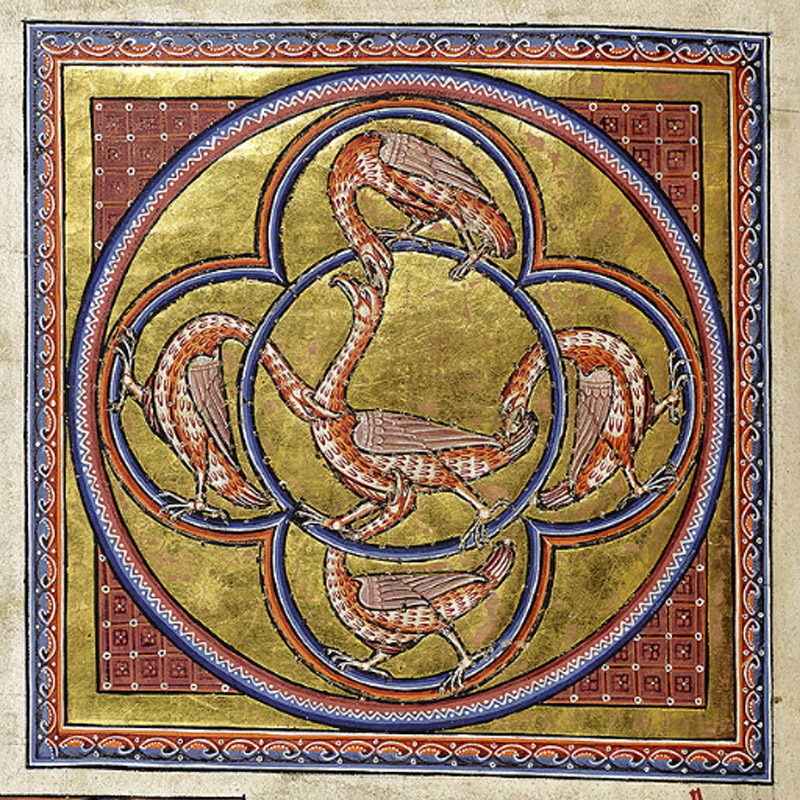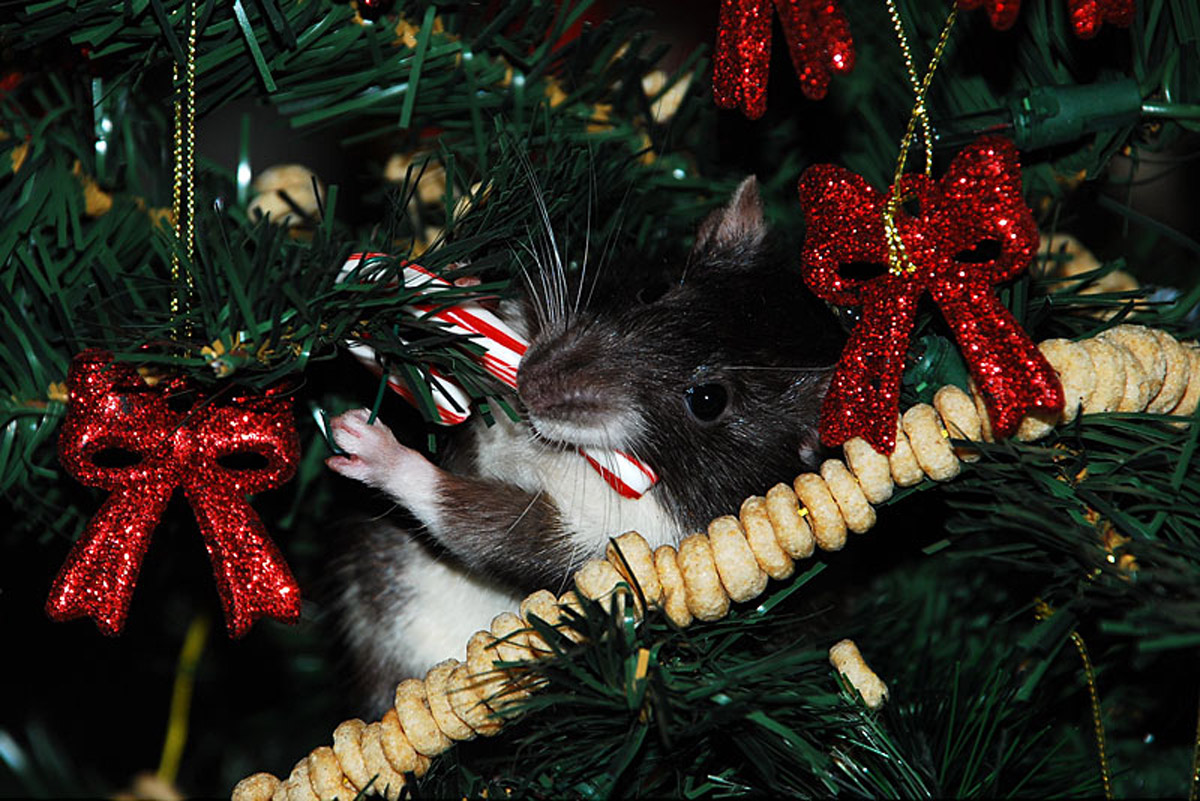
Two recognisable storks in a roundel. One is eating a frog, not the snake mentioned in the text and the other may be snapping its beak together.
Text Translation:
Of the stork Storks get their name, ciconie, from the creaking sound they make, like crickets, cicanie. The sound comes from their mouth rather than their voice, because they make it by clashing their bills. Storks are the heralds of spring; they share a sense of community; they are the enemies of snakes; they fly across the sea, making their way in flocks to Asia. Crows go in front of them as their guides, the storks following them as if in an army. Storks possess a strong sense of duty towards their young. They are so keen to keep their nests warm that their feathers fall out as a result of the constant incubation. But their young spend as much time caring for them when they grow old, as they spend caring for their young.
Storks make a sound by clashing their bills. They represent those who ‘with weeping and gnashing of teeth’ (Matthew, 8:12) proclaim from their own mouths the evil they have done. Storks herald the spring, like those who demonstrate to others the moderation of a mind that has undergone conversion. They have a sense of community like those who live willingly in the community of their brothers. It is said also that the stork is the enemy of snakes. Snakes are evil thoughts or evil brothers; the stork strikes snakes with its bill, as the righteous check evil thoughts or reprimand their wicked brothers with penetrating rebukes.
Storks fly across the sea and make their way in flocks to Asia. Asia signifies heavenly things. Those people also fly across the sea to Asia, therefore, who, scorning the commotions of the world, aim for higher things. Storks are are notably devoted to their young, with the result that their feathers fall out from constant incubation. Storks lose their feathers from the constant incubation of their young in the same way that prelates, when they nourish those in their charge, pluck out from their own bodies the feathers of excess and weakness. Young storks spend as much time caring for their parents as their parents spent on rearing them. Storks must nourish their young in proportion to their need, in the same way that prelates should feed their disciples with instruction according to their need. Likewise the prelates’ flock should support them with their efforts and provide them with the necessities they lack. Thus the turtle-dove, the swallow and the stork are a living reproach to those who do not believe that Christ came in the flesh and do not go in fear of the judgement of the Lord to come.
Folio 48v – the swallow, continued. De ciconia; Of the stork.
















